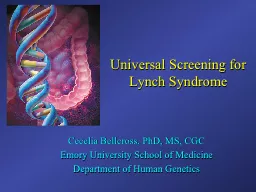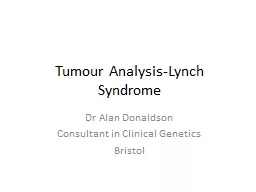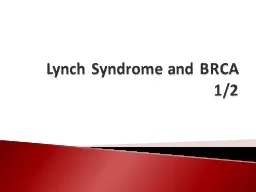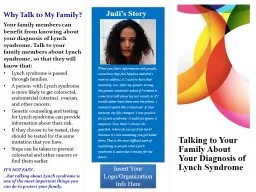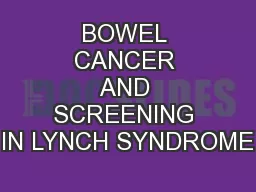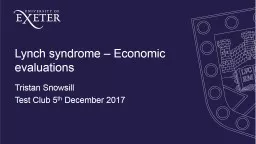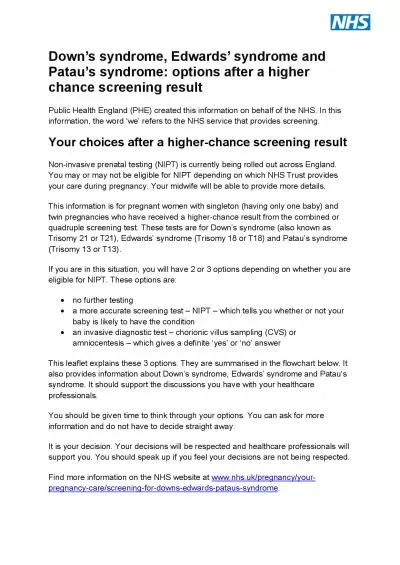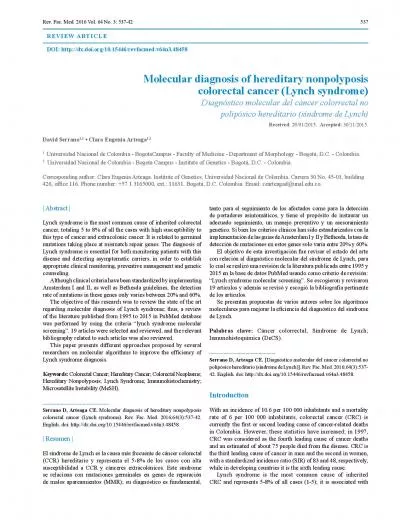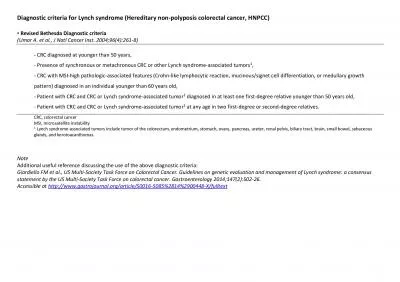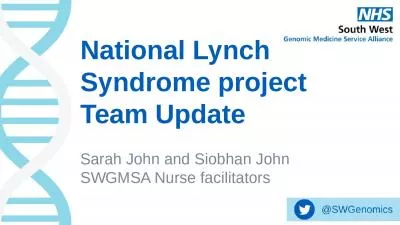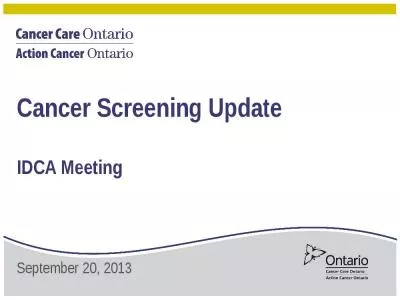PPT-Universal Screening for Lynch Syndrome
Author : faustina-dinatale | Published Date : 2016-04-26
Cecelia Bellcross PhD MS CGC Emory University School of Medicine Department of Human Genetics Genetics of CRC Sporadic 65 85 Familial 10 30 Lynch syndrome aka
Presentation Embed Code
Download Presentation
Download Presentation The PPT/PDF document "Universal Screening for Lynch Syndrome" is the property of its rightful owner. Permission is granted to download and print the materials on this website for personal, non-commercial use only, and to display it on your personal computer provided you do not modify the materials and that you retain all copyright notices contained in the materials. By downloading content from our website, you accept the terms of this agreement.
Universal Screening for Lynch Syndrome: Transcript
Download Rules Of Document
"Universal Screening for Lynch Syndrome"The content belongs to its owner. You may download and print it for personal use, without modification, and keep all copyright notices. By downloading, you agree to these terms.
Related Documents

